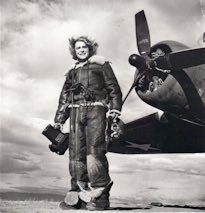In the era before television and instant communication, the photographs of Margaret Bourke-White showed the American people the world – the despair and depression of the dustbowl, London during the Blitz, Stalin and the Kremlin, battles of World War II, the liberation of concentration camps, India and Gandhi, South Africa, the Korean War.
The first female documentary photographer to work with and be accredited by the U.S. armed forces, Bourke-White began her work as photographer while at Cornell University. After her graduation, she became enthralled with the machine age, photographing the industrial plants in Cleveland, the Chrysler Building in New York City. She was one of the first photographers for Fortune magazine in 1929 and in 1935 she was one of the first photojournalists selected to work for Life magazine.
Her photographs of a dam under construction in New Deal, Montana and the towns nearby were the cover and lead articles of the first issue of Life. She said of her work, “My life and my career was not an accident. It was thoroughly thought out.” Bourke-White remained with Life through the 1950s when illness curtailed her work.

